Abstract
Acceptance is integral to several cutting-edge behavior therapies. However, several questions about acceptance remain to be clearly answered. First, what does acceptance look like, and can it be observed and measured? Second, what are the behavioral principles involved in the promotion of acceptance? Third, when is acceptance indicated or contraindicated as a therapeutic goal? The current paper attempts to clarify answers to these questions. The goal is to provide a conceptualization of the what, how, and when of acceptance that is accessible to behavior analysts, both to promote our understanding of acceptance as a behavioral phenomenon and to facilitate its empirical study and therapeutic utility.
Keywords: acceptance, clinical behavior analysis, behavior therapy
Full text
PDF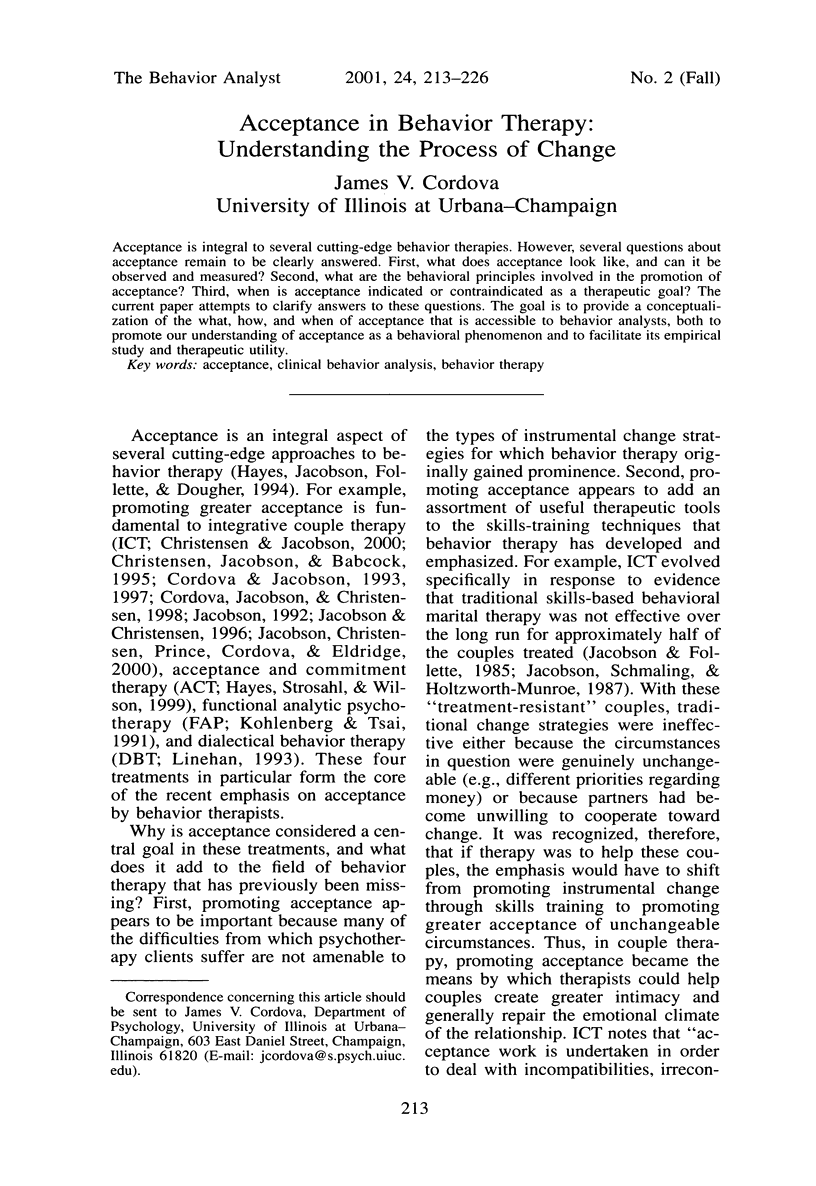


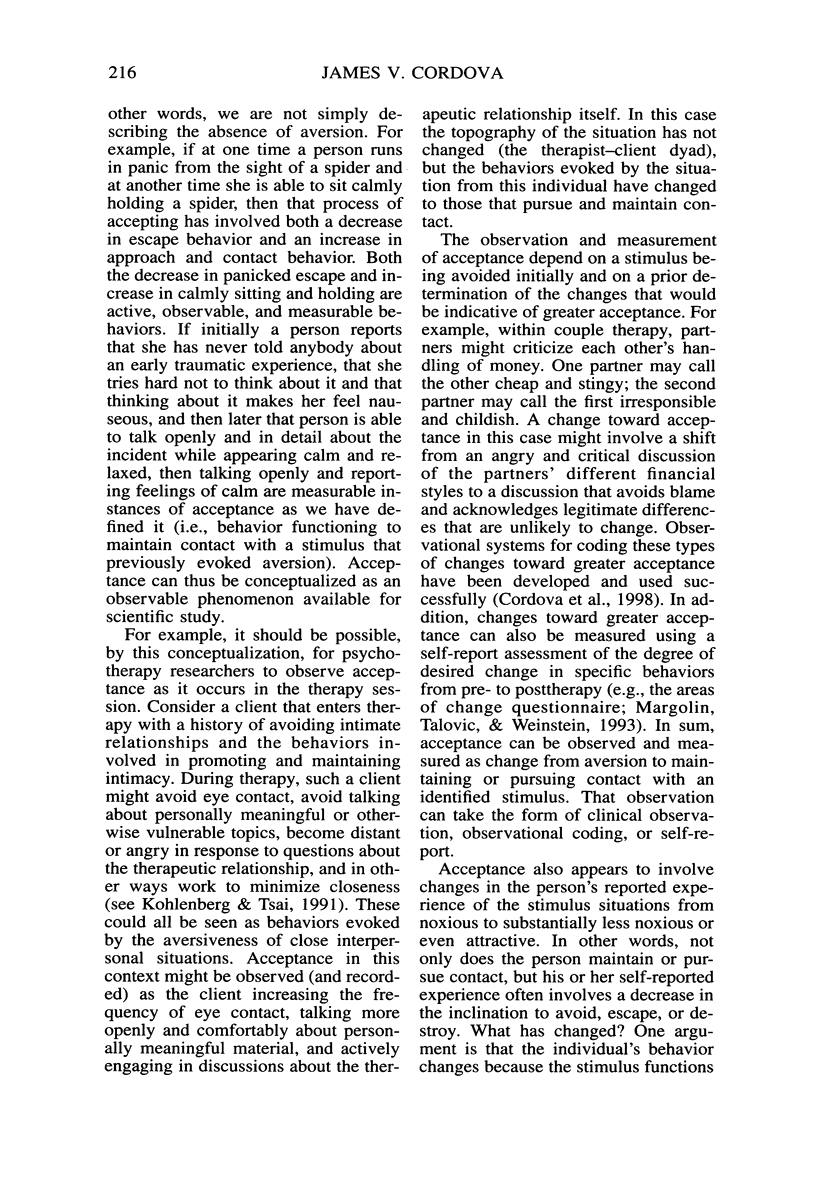
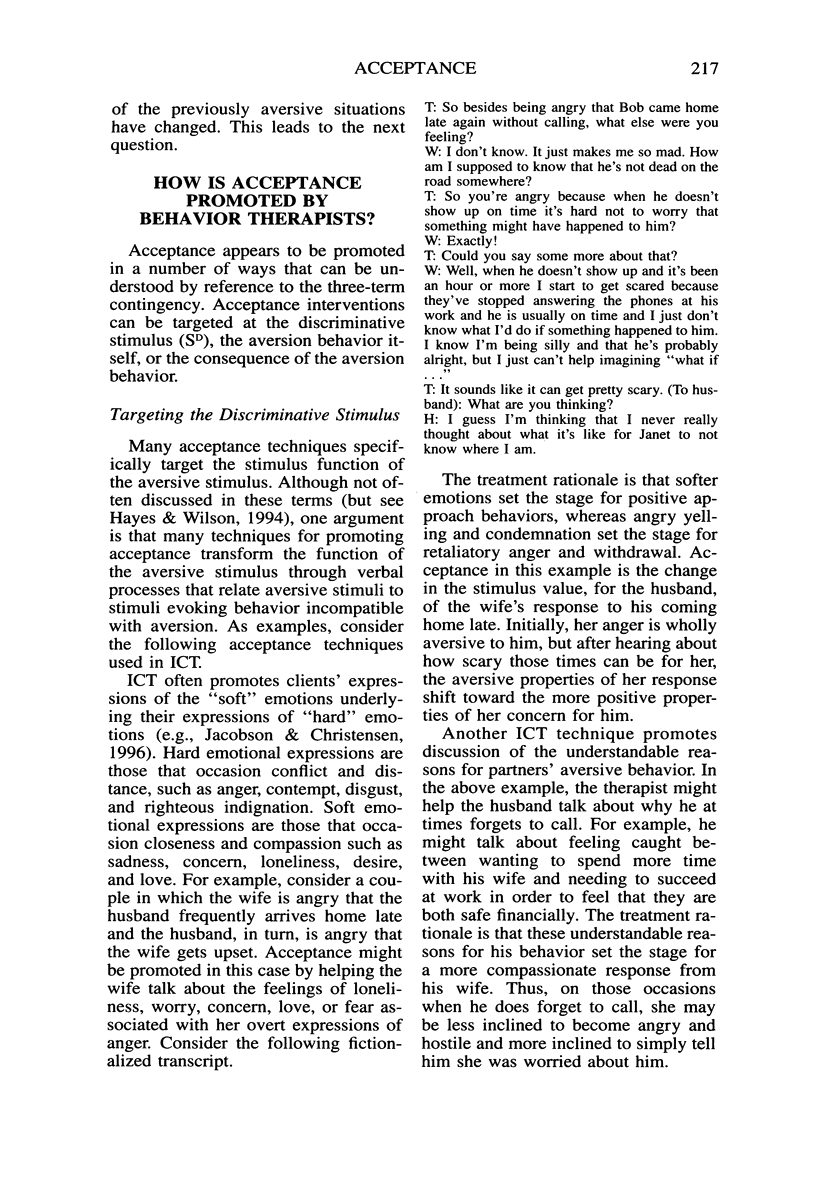
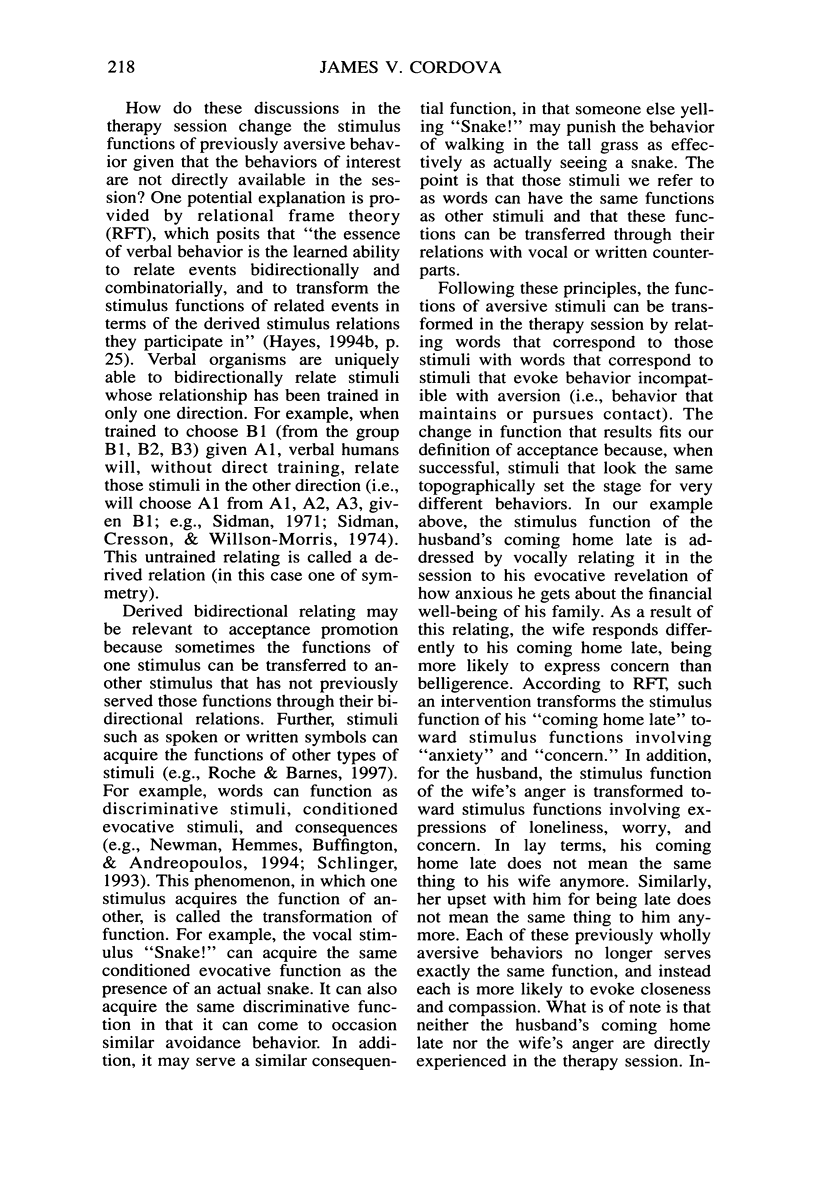


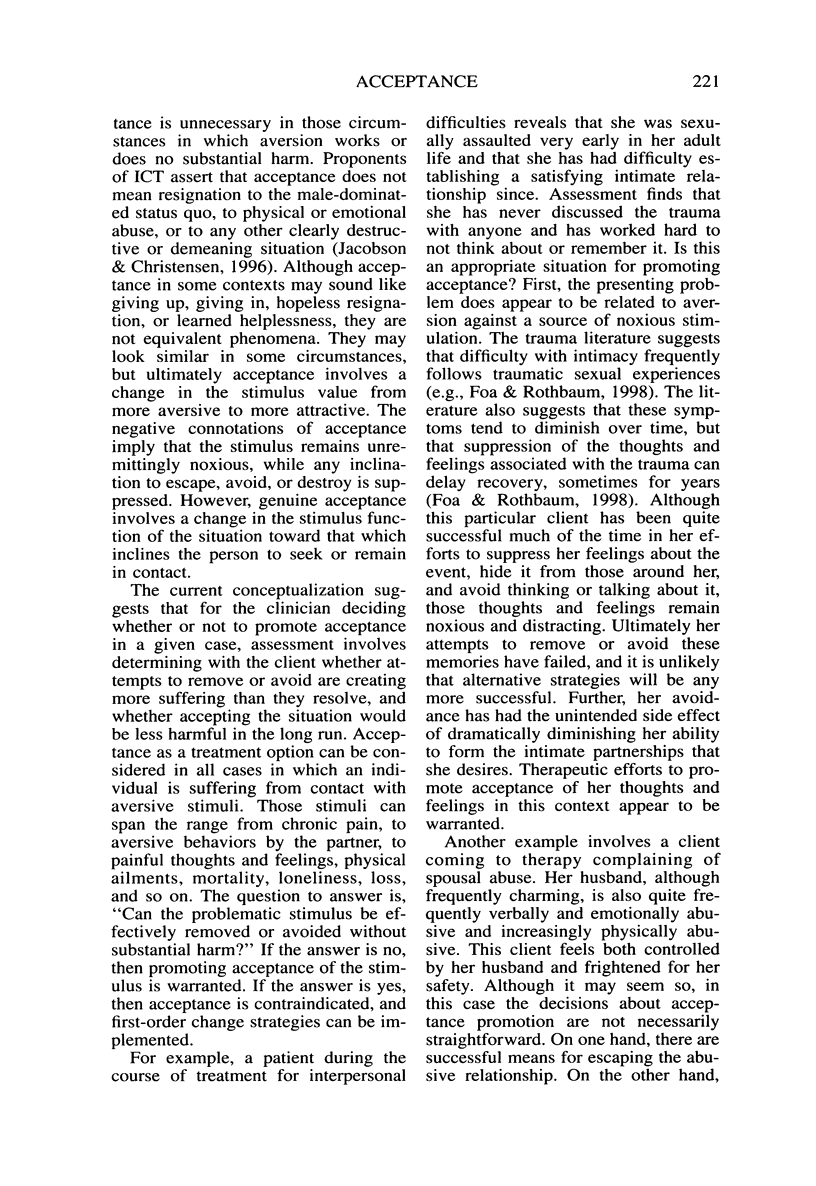


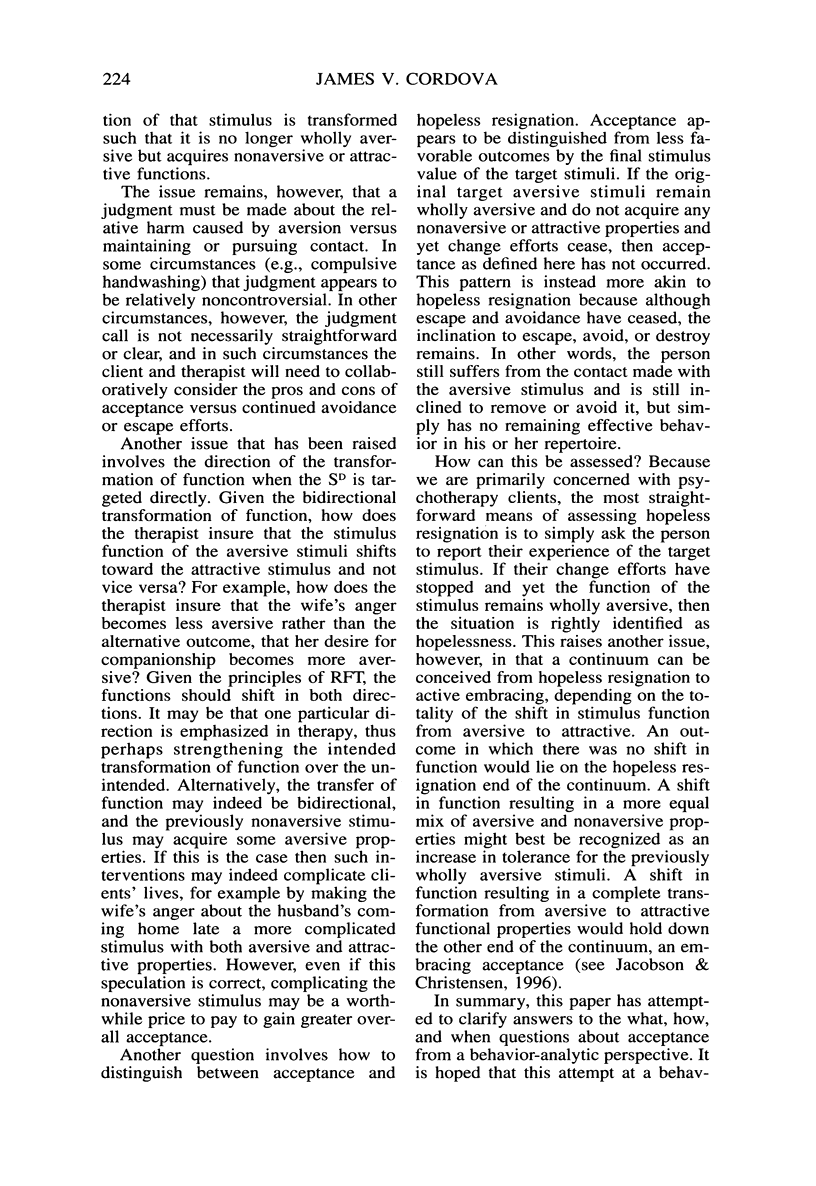


Selected References
These references are in PubMed. This may not be the complete list of references from this article.
- Abramowitz J. S. Effectiveness of psychological and pharmacological treatments for obsessive-compulsive disorder: a quantitative review. J Consult Clin Psychol. 1997 Feb;65(1):44–52. doi: 10.1037//0022-006x.65.1.44. [DOI] [PubMed] [Google Scholar]
- Becker E. S., Rinck M., Roth W. T., Margraf J. Don't worry and beware of white bears: thought suppression in anxiety patients. J Anxiety Disord. 1998 Jan-Feb;12(1):39–55. doi: 10.1016/s0887-6185(97)00048-0. [DOI] [PubMed] [Google Scholar]
- Bond F. W., Bunce D. Mediators of change in emotion-focused and problem-focused worksite stress management interventions. J Occup Health Psychol. 2000 Jan;5(1):156–163. doi: 10.1037//1076-8998.5.1.156. [DOI] [PubMed] [Google Scholar]
- Cioffi D., Holloway J. Delayed costs of suppressed pain. J Pers Soc Psychol. 1993 Feb;64(2):274–282. doi: 10.1037//0022-3514.64.2.274. [DOI] [PubMed] [Google Scholar]
- Cordova J. V., Jacobson N. S., Christensen A. Acceptance versus change interventions in behavioral couple therapy: impact on couples' in-session communication. J Marital Fam Ther. 1998 Oct;24(4):437–455. doi: 10.1111/j.1752-0606.1998.tb01099.x. [DOI] [PubMed] [Google Scholar]
- Foa E. B., Rothbaum B. O., Riggs D. S., Murdock T. B. Treatment of posttraumatic stress disorder in rape victims: a comparison between cognitive-behavioral procedures and counseling. J Consult Clin Psychol. 1991 Oct;59(5):715–723. doi: 10.1037//0022-006x.59.5.715. [DOI] [PubMed] [Google Scholar]
- Hayes S. C., Wilson K. G. Acceptance and commitment therapy: Altering the verbal support for experiential avoidance. Behav Anal. 1994 Fall;17(2):289–303. doi: 10.1007/BF03392677. [DOI] [PMC free article] [PubMed] [Google Scholar]
- Jacobson N. S., Christensen A., Prince S. E., Cordova J., Eldridge K. Integrative behavioral couple therapy: an acceptance-based, promising new treatment for couple discord. J Consult Clin Psychol. 2000 Apr;68(2):351–355. doi: 10.1037//0022-006x.68.2.351. [DOI] [PubMed] [Google Scholar]
- Kohlenberg R. J., Tsai M. Improving cognitive therapy for depression with functional analytic psychotherapy: Theory and case study. Behav Anal. 1994 Fall;17(2):305–319. doi: 10.1007/BF03392678. [DOI] [PMC free article] [PubMed] [Google Scholar]
- Linehan M. M., Armstrong H. E., Suarez A., Allmon D., Heard H. L. Cognitive-behavioral treatment of chronically parasuicidal borderline patients. Arch Gen Psychiatry. 1991 Dec;48(12):1060–1064. doi: 10.1001/archpsyc.1991.01810360024003. [DOI] [PubMed] [Google Scholar]
- Roche B., Barnes D. A transformation of respondently conditioned stimulus function in accordance with arbitrarily applicable relations. J Exp Anal Behav. 1997 May;67(3):275–301. doi: 10.1901/jeab.1997.67-275. [DOI] [PMC free article] [PubMed] [Google Scholar]
- Schlinger H. D., Jr Separating discriminative and function-altering effects of verbal stimuli. Behav Anal. 1993 Spring;16(1):9–23. doi: 10.1007/BF03392605. [DOI] [PMC free article] [PubMed] [Google Scholar]
- Sidman M., Kirk B., Willson-Morris M. Six-member stimulus classes generated by conditional-discrimination procedures. J Exp Anal Behav. 1985 Jan;43(1):21–42. doi: 10.1901/jeab.1985.43-21. [DOI] [PMC free article] [PubMed] [Google Scholar]
- Sidman M. Reading and auditory-visual equivalences. J Speech Hear Res. 1971 Mar;14(1):5–13. doi: 10.1044/jshr.1401.05. [DOI] [PubMed] [Google Scholar]
- Zettle R. D., Rains J. C. Group cognitive and contextual therapies in treatment of depression. J Clin Psychol. 1989 May;45(3):436–445. doi: 10.1002/1097-4679(198905)45:3<436::aid-jclp2270450314>3.0.co;2-l. [DOI] [PubMed] [Google Scholar]


